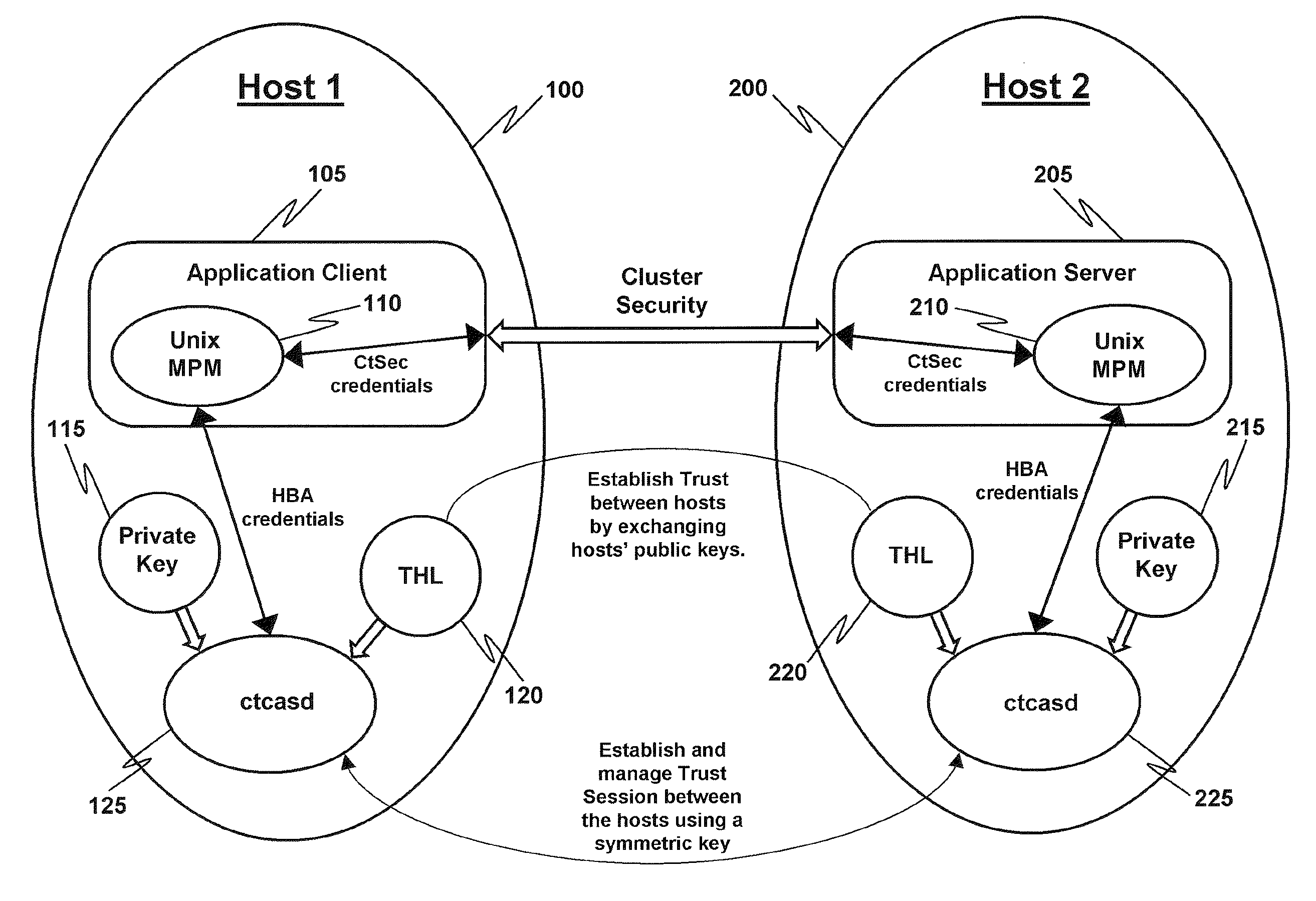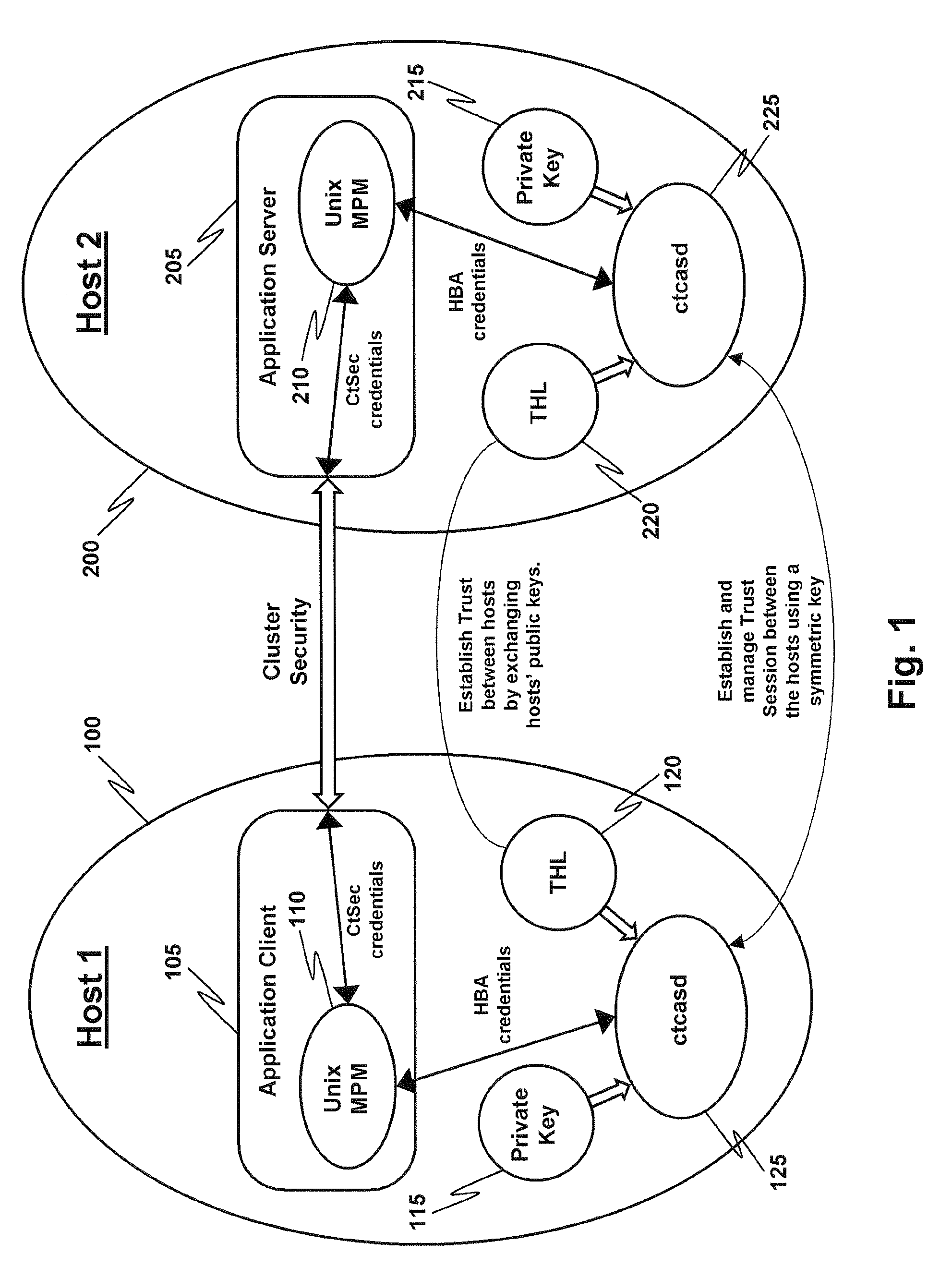Trust session management in host-based authentication
- Summary
- Abstract
- Description
- Claims
- Application Information
AI Technical Summary
Benefits of technology
Problems solved by technology
Method used
Image
Examples
Embodiment Construction
[0012]In the discussion below there is a description of the Host-Based Authentication (HBA) security mechanism as employed herein. In particular, in FIG. 1, there are two hosts, Host 1 (100) and Host 2 (200), that establish trust between themselves by exchanging their respective HBA public keys, as shown. Application client 105, trying to authenticate to application server 205, acquires a network identity from ctcasd daemon 125 (which implements HBA) in the form of a context control data buffer (CCDB, not shown). Application client 105 then sends this CCDB information to application server 205 which, in turn, sends it to daemon 225 for the purpose of authenticating the application client's identity. (A daemon is a program that runs in the background with respect to an application program user and is typically employed to respond to various events or requests.) The ctcasd daemons 125 and 225 both employ a Trusted Host List (THL), 120 and 220 respectively, to facilitate the exchange o...
PUM
 Login to View More
Login to View More Abstract
Description
Claims
Application Information
 Login to View More
Login to View More - R&D
- Intellectual Property
- Life Sciences
- Materials
- Tech Scout
- Unparalleled Data Quality
- Higher Quality Content
- 60% Fewer Hallucinations
Browse by: Latest US Patents, China's latest patents, Technical Efficacy Thesaurus, Application Domain, Technology Topic, Popular Technical Reports.
© 2025 PatSnap. All rights reserved.Legal|Privacy policy|Modern Slavery Act Transparency Statement|Sitemap|About US| Contact US: help@patsnap.com


